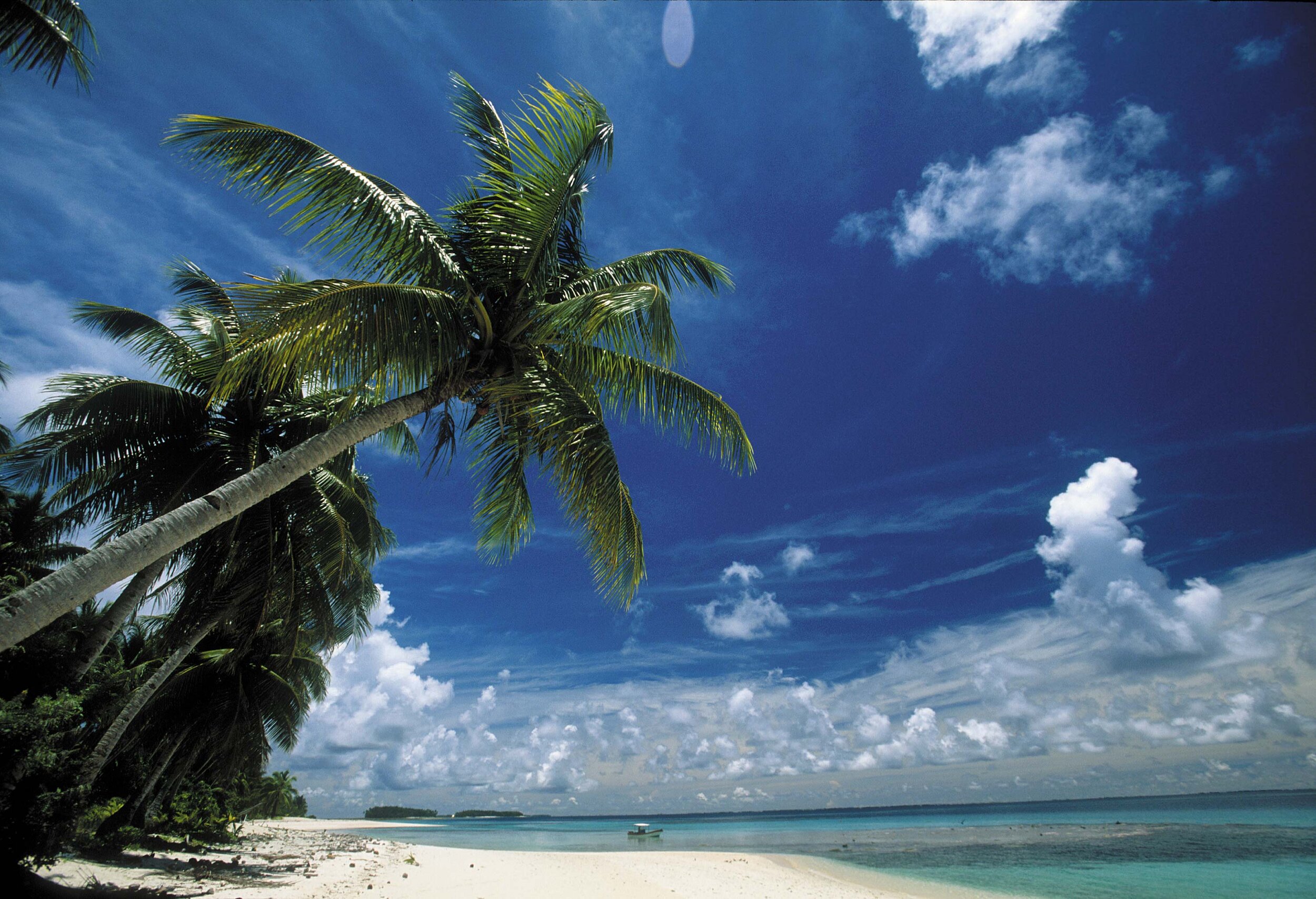
Marshall Islands

Marshall Islands
The Republic of the Marshall Islands is an island country near the Equator scattered over 180,000 square miles of the Pacific Ocean, slightly west of the International Date Line, about halfway between Hawaii and Australia. Geographically, the country is part of the larger island group of Micronesia, meaning “small islands.” Majuro atoll is the capital and most populated atoll. The largest atoll in the group and in the world is Kwajalein, which has a land area of only six square miles but surrounds a 655-square-mile lagoon.
The country's population of 58,413 people (at the 2018 World Bank Census) is spread out over 29 coral atolls, comprising 1,156 individual islands, none of which rises to more than an average altitude of 7 feet above sea level. This figure excludes the rising number of Marshallese who have migrated to the United States. Approximately 15,000 Marshallese have relocated to Springdale, Arkansas, the largest population concentration of Marshallese outside their island home.
Having passed through colonial rule by the Spanish, Germans, and Japanese, the Marshall Islands became a United States administered United Nations strategic trusteeship on July 18, 1947, following World War II. This new arrangement was a part of the Trust Territory of the Pacific Islands (TTPI).
In the 1970s, the districts that comprised the TTPI began voting to end their trustee relationship with the U.S. The Marshall Islands became an internally self-governing Republic in 1979. It signed a compact of free association with the U.S. in 1982 and became fully self-governing in 1986. The Compact provided for aid and U.S. defense of the islands in exchange for continued U.S. military use of the missile testing range at Kwajalein Atoll. It also allows Marshallese to freely relocate to the United States and obtain employment and education. The independence procedure was formally completed under international law in 1990, when the UN officially ended the Trusteeship status.
The government of the Marshall Islands operates under a mixed parliamentary presidential system as set forth in its Constitution. Elections are held every four years in which citizens from twenty-four constituencies elect one or more senators to the lower house of RMI’s bicameral legislature, the Nitijela. The President, who is head of state as well as head of government, is elected by the 33 senators of the Nitijela. Legislative power lies with the Nitijela. The upper house of Parliament, called the Council of Iroij, is an advisory body comprising twelve tribal chiefs. The executive branch consists of the President and the Presidential Cabinet, which consists of ten ministers appointed by the President with the approval of the Nitijela. The twenty-four electoral districts into which the country is divided correspond to the inhabited islands and atolls.
(Sources: https://en.wikipedia.org/wiki/Marshall_Islands; https://www.britannica.com/place/Marshall-Islands)


















Christian History
American missionaries arrived in the Marshalls in the 1850s, introducing Christianity. Major religious groups include the United Church of Christ – Congregational in the Marshall Islands, with 51.5% of the population; the Assemblies of God, 24.2%; the Roman Catholic Church, 8.4%; and The Church of Jesus Christ of Latter-day Saints (Mormons),8.3%. Also represented are Bukot Nan Jesus, 2.2%; Baptist, 1.0%; Seventh-day Adventists, 0.9%; Full Gospel, 0.7%; and the Baháʼí Faith, 0.6%. Persons without any religious affiliation account for a very small percentage of the population. Islam is also present; the first mosque opened in the capital of Majuro in 2012.
(Source: https://en.wikipedia.org/wiki/Marshall_Islands)


